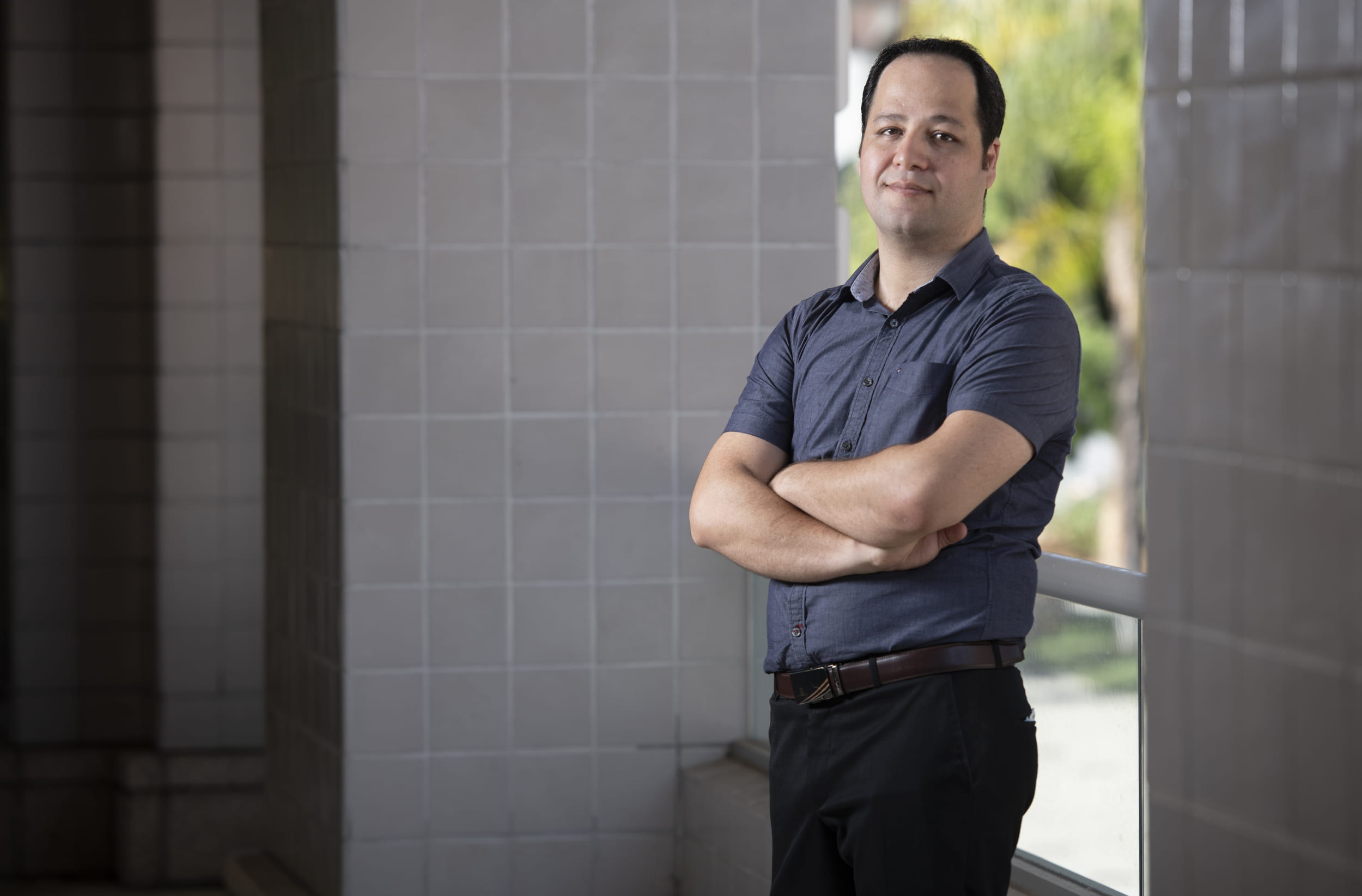UC Irvine researchers invent a bioelectronic-integrated artificial colon for disease studies, drug screening
Closely matching its human counterpart, replica eliminates need for animal testing

- Researchers envision taking a patient’s own cells from a tumor biopsy and growing a personalized mini-colon to determine which drug works best for that individual patient.
- The model can be used to test patient-tailored drug treatments and dosages.
- Innovation provides cost-effective and ethical approach to disease treatment.
Irvine, Calif., Oct. 15, 2025 — Researchers at the University of California, Irvine have developed a 3D human colon model integrated with bioelectronics to aid in colorectal cancer research and drug discovery. The “3D in vivo mimicking human colon” enables precision, personalized medicine and offers a more ethical, accurate and cost-effective alternative to traditional animal testing.
In a paper published recently in the journal Advanced Science, researchers in UC Irvine’s Samueli School of Engineering outline their creation of an approximately 5-by-10-millimeter replica that incorporates essential structural features of a colon, including liminal curvature, multilayered cellular organization and the spontaneous formation of cryptlike indentations.
“The three-dimensional shapes, curves and crypts in our 3D-IVM-HC model are central to maintaining more realistic cell behavior even at a scaled-down size,” said senior author Rahim Esfandyar-pour, UC Irvine assistant professor of electrical engineering and computer science. “And because our model more closely reproduces human colon biology, it could potentially be used to screen drugs or test treatments in a way that better predicts patient responses than animal models or simple cell cultures. It could be among the strong nonanimal models and new approaches that experts at the U.S. Food and Drug Administration are seeking.”
Esfandyar-pour said he was inspired to undertake this project when he noticed critical limitations in current preclinical testing methods to detect and treat colon maladies. He said roughly half of rodent-derived toxicological findings fail to accurately predict human toxicities, and animal models often inadequately capture critical aspects of human tumor biology. Also, animal-based studies require financial resources that often total multiple millions of dollars over a four- to five-year period for routine cancer studies alone.
“Our bioelectronic-integrated 3D-IVM-HC model addresses some of the practical and ethical challenges in animal-based research, offering a human cell-based, animal-free approach with the potential to enable rapid, cost-effective and scalable translational studies,” Esfandyar-pour said. “By eliminating interspecies variability, the model has the ability to enhance clinical translatability, providing an accelerated and ethically responsible pathway for preclinical research.”
The model is constructed using a biological scaffold made from gelatin methacrylate mixed with alginate, which together form a support matrix that mimics the colon’s soft tissue. Human colon cells line the inner surface of the mini-colon, while supportive fibroblasts are embedded in the outer layer to re-create the colon’s living environment.
“This intricate architectural arrangement promotes robust cell-to-cell interactions, yielding a fourfold increase in cell density relative to conventional 2D cultures and possibly enhancing physiological relevance and barrier function,” Esfandyar-pour said.
He added that the 3D-IVM-HC model outperforms traditional culture-based drug screening systems. In experiments using the chemotherapy drug 5-fluorouracil, the model showed that cancer cells were much more resistant to treatment – requiring roughly 10 times higher doses to achieve the same cell-killing effect as an application in a conventional petri dish. This mirrors the drug resistance observed in real patient tumors, indicating the model’s higher fidelity for drug testing, Esfandyar-pour noted.
The platform opens new avenues for tailored treatments, according to the paper. Researchers envision taking a patient’s own cells from a tumor biopsy and growing a personalized mini-colon to determine which drug works best for that individual patient.

The model’s development timeline involves approximately two weeks for cultivation and maturation, followed by a few days of testing – a dramatically faster and more cost-effective approach than traditional animal studies. This time frame allows the model to realistically mimic physiological responses while providing rapid results for drug screening.
Esfandyar-pour said the innovation could advance mechanistic understanding, enhance predictive accuracy in therapeutic efficacy assessments and accelerate high-throughput precision drug discovery.
“Hospitals and laboratories could ultimately use such models to run preclinical tests on new therapies in an ethical, timely manner, possibly transforming the drug development pipeline,” he said. “This research may represent a significant step toward global efforts to develop more reliable, humane and cost-effective alternatives to animal testing, potentially advancing precision medicine and improving outcomes for patients with colorectal cancer worldwide.”
Joining Esfandyar-pour on this project were J.A. Tavares-Negrete of UC Irvine’s Department of Biomedical Engineering; Sahar Najafikhoshnoo and Anita Ghandehari of UC Irvine’s Department of Electrical Engineering and Computer Science; Mozhgan Keshavarz and Quinton Smith of UC Irvine’s Department of Chemical and Biomolecular Engineering; and Armand Ahmetaj and Steven Zanganeh of the New York Institute of Technology. Funding was provided by UC Irvine’s Samueli School of Engineering.
About the University of California, Irvine: Founded in 1965, UC Irvine is a member of the prestigious Association of American Universities and is ranked among the nation’s top 10 public universities by U.S. News & World Report. The campus has produced five Nobel laureates and is known for its academic achievement, premier research, innovation and anteater mascot. Led by Chancellor Howard Gillman, UC Irvine has more than 36,000 students and offers 224 degree programs. It’s located in one of the world’s safest and most economically vibrant communities and is Orange County’s second-largest employer, contributing $7 billion annually to the local economy and $8 billion statewide. For more on UC Irvine, visit www.uci.edu.